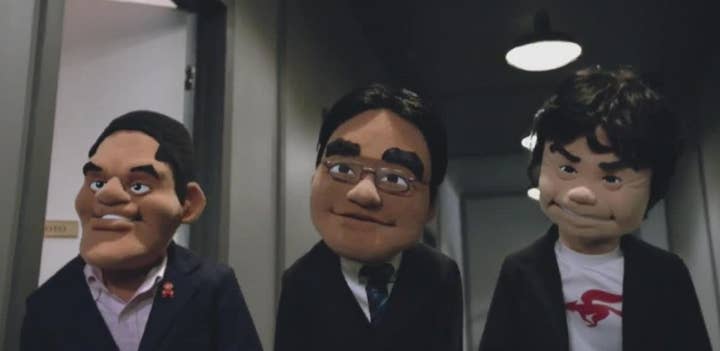Nintendo Direct has transformed the company's relationship with its fans
The firm has learnt to embrace its demanding fanbase
I remember sitting in the room during Nintendo's final E3 press conference in 2012.
At that moment, the platform holder was at its most conflicted, and you could see it through these events. On the one hand, you had a company intent on expanding the gaming population through innovative almost non-gaming properties.
On the other, you had the much loved game developer behind Zelda, Mario and Animal Crossing.
Nintendo never managed to strike the balance between the two at E3. And 2012 was no exception. Nintendo Land may have been the perfect game to showcase Wii U, but it was not the perfect game to send Nintendo's loyal followers skipping out of the room, giddy with excitement. The disappointment was palpable. It was another E3 let down. Maybe next year will be better.
The Wii U's failure to capture the imagination of the mass market has been well discussed - lack of games, poor positioning and weak hardware. But the failure to inspire Nintendo's own core fans can be traced back to this very moment. Nintendo seemed to have forgotten how to speak to its most dedicated supporters.
The following year Nintendo abandoned its E3 conferences. Instead it ran a video featuring an awkward Satoru Iwata standing in a giant empty room (featuring a panning shot of said room).
At the time it felt like an admission of defeat for the company. It simply couldn't put on a good show, so it wasn't even going to try.
Yet over time, these Nintendo Direct videos helped the firm reconnect with an audience that had felt sidelined during the Wii generation. The company did this in other ways, too. Nintendo's product line started to reflect its pre-Wii output, with Wii Music and Balance Boards cast aside in favour of Splatoon and Amiibo.

But it was the videos that allowed Nintendo to re-develop its unique personality. The old super sleek, professional E3 stage shows had been replaced with executives wearing novelty hats, or puppet versions of the management team morphing into Star Fox characters, or Iwata staring at a banana. Awkward, broken dialogue and unintentional comedic moments became memes, and Nintendo embraced all of it.
Most significantly, it was no longer confined to just announcing things during E3. Direct videos would crop up with increasing regularity. Fans began to realise that even if one Direct failed to excite them, another one was likely just around the corner.
"Often before a Direct, the comments threads and forums are full of announcement wish lists that Nintendo couldn't possibly hope to fulfill"
Some of this activity was built out of necessity. Wii U's lack of popularity meant it didn't command the same media coverage as before, or even retail shelf space. It forced Nintendo to directly communicate with its audience, and even open its own online stores.
It's not been without its negativity, however. The anticipation around each new video is sometimes feverish. That was especially true of the one that debuted yesterday. Rumours of an imminent Nintendo Direct saw the term trending on Twitter, despite no word from Nintendo itself. And the comments threads and forums were full of announcement wish lists that Nintendo couldn't possibly hope to fulfill.
The company has learned to manage expectations to a degree, often warning its fans in advance if the product announcements might be for a specific platform or of a specific variety. Yet it doesn't always help. Last year's Switch reveal featured details on a new Zelda, Mario, Mario Kart and a new IP called Arms - and yet it was still criticised as the expectation was so much higher.
Yesterday, Nintendo announced five new Switch games - most of which are arriving in the next six months. It revealed DLC for three of its biggest Switch games, including a free mode for Super Mario Odyssey. Yet still some fans were not satisfied. Where was Smash Bros? Or the Virtual Console? Or F-Zero?
But an engaged, demanding fanbase is a good problem to have. And it's been a strong turnaround from five years ago, when Nintendo magazines were closing and fan sites were struggling to find an audience.
Nintendo isn't alone in this direct communication, of course. The trend of cutting out the media middle men and speaking directly to your audience can be found everyone, whether that's PlayStation's YouTube Channel, Rare's Sea of Thieves dev diaries, Kickstarter campaigns, Reddit AMAs... all major games companies now have sizeable community teams who host fan events, create video updates and produce blogs.
However, these are often used in support of the big announcements - to keep the excitement going between the major PR beats. At Nintendo, the Direct videos are the main events. They're like a constant flow of mini-E3 conferences, featuring the occasional bit of bizarre nonsense, that get fans talking on social media, posting on forums and sharing memes.
It has enabled Nintendo to have fun with a fanbase that - at one point - looked like it had lost. It's a surprise that more major video game brands haven't followed suit.
